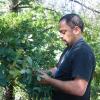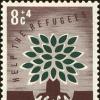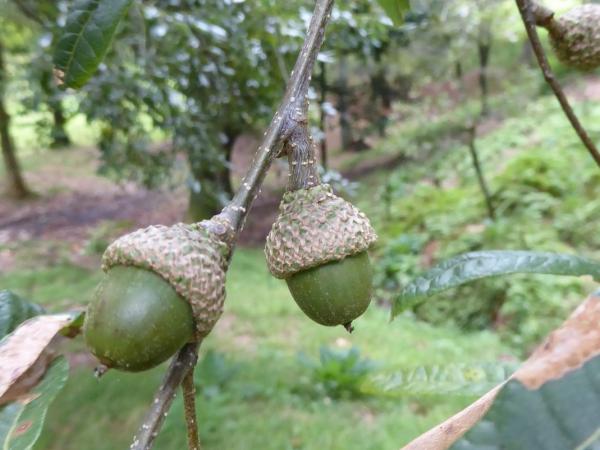Editor's Picks
Plant Focus
Hybrid Highlight: Quercus ×ludoviciana Sarg.
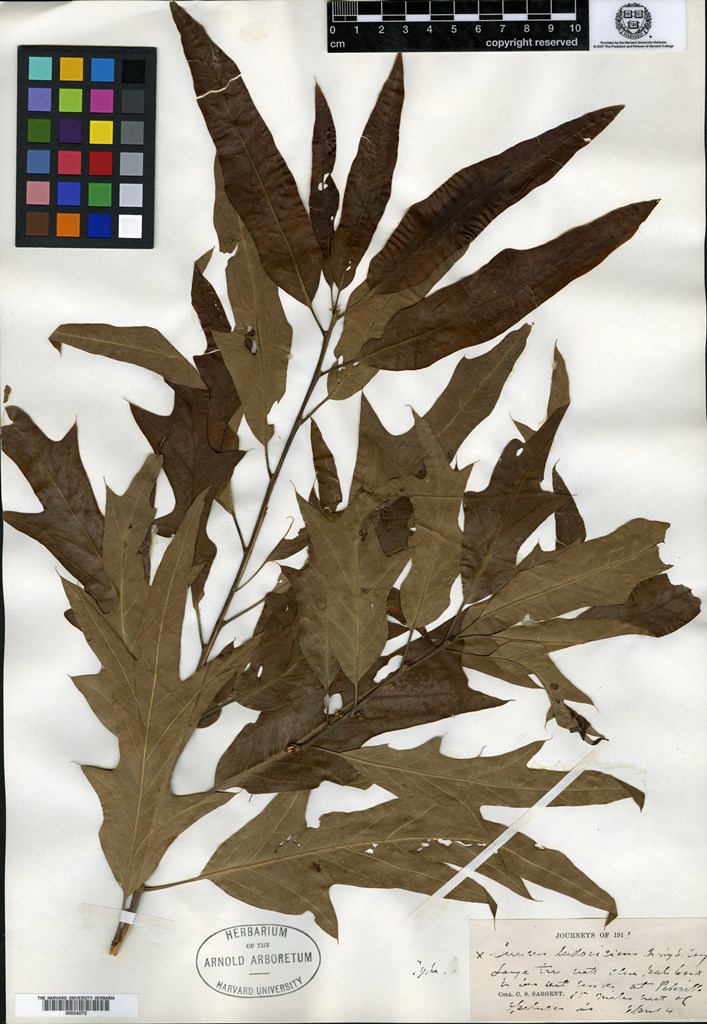
Quercus ×ludoviciana is a naturally occurring oak hybrid from southeastern United States, which has flourished and attracted attention in collections worldwide. Over the years there has been some confusion regarding the hybrid’s parentage, but it is now accepted to be a cross of Q. phellos (willow oak) and Q. pagoda (cherrybark oak). It inherits from the latter a glossy dark green leaf blade, and dull green undersides which can be glabrous or sport loose tawny down on each side of the midrib. Willow oak influence is evident in the leaf outline, which in general is obovate to elliptic, with 1 to 4 pairs of aristate lobes, though, as would be expected in a hybrid, there is considerable variation in leaf shape. According to C.S. Sargent’s original description, leaves at the base of the branch are relatively large and cuneate at the base, with upper lobes wider than lower ones, and the terminal lobe is long-acuminate; the upper leaves are narrower and less deeply lobed, and at the apex of the branch they are lanceolate, occasionally falcate, undulate or entire, long-acuminate, cuneate or rounded and often unsymmetrical at the base (Sargent 1913).
Foliage is deciduous (or semi-evergreen, according to Hillier’s Manual of Trees and Shrubs), and spring coloring is reported to be spectacular, with copper-tinted young leaves. Lammas growth is said to be even better, when young leaves in “lovely hues of bronze and coral red, contrast superbly with the dark green older leaves.” Lammas growth leaves are also larger and more strongly lobed (Muir 1978). The bark is described by Beaulieu and Lamant (2006) as being closer to Q. phellos, though some specimens tend towards Q. pagoda.
The epithet ludoviciana means “pertaining to Ludovicus”, the Latin version of the name Lewis (Ludwig in German and Louis in French). In botanical nomenclature it has been used to describe plants found near St. Louis, Missouri—the best known example is Artemisia ludoviciana—or more commonly in the U.S. state of Louisiana—e.g. Carya ×ludoviciana. Both places were named after a French king by the name of Louis, but not the same one: St. Louis was named for Louis IX, who reigned in the 13th century, while Louisiana was named after Louis XIV, who occupied the same throne some four centuries later. Pronunciation is of course a matter of choice: “lue-doh-vis-ee-AH-nuh” is likely the most common option, but “lue-do-vee-kee-AH-nuh” or “lue-do-vee-chee-AH-nuh” would also be justified.
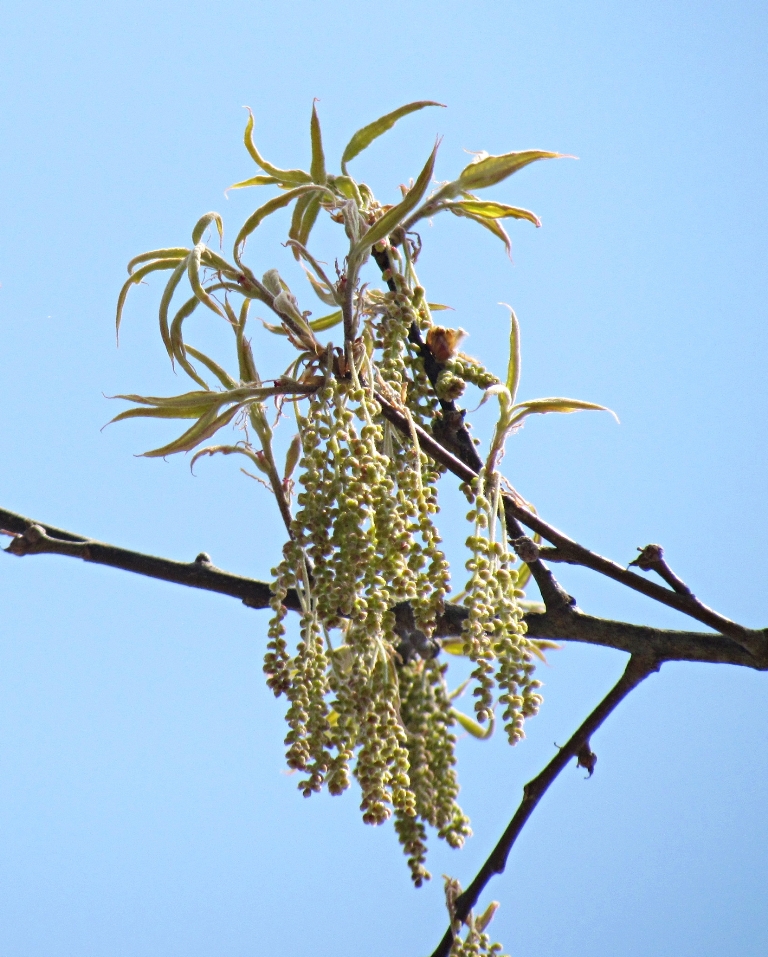
In the case of oaks, the epithet first appeared as Ludoviciana and was used by Alphonse de Candolle in his Prodromus (1864), where it is assigned to a variety of Q. falcata found in Louisiana. His Latin description hints that it may be indeed be a hybrid: “An hybrida quaedam?” (Or a hybrid?). Trelease treated this name as a synonym of Q. rubra. The accepted name Q. ×ludoviciana was established by C.S. Sargent in 1913 based on a specimen he collected with R.S. Cocks from a tree they found 15 miles miles west of the town of Opelousas, in central Louisiana. Opelousas is the seat of the parish of St Landry (Louisiana is divided into parishes like most other U.S. states are divided into counties). “St Landry oak” became one of the common names of Q. ×ludoviciana, also derived from a French historical figure: Landry (Landericus) was a 7th century bishop of Paris. The other common name is “Louisiana oak”, which seems somewhat arbitrary as 25 oak species and 11 recognized hybrids are native to that state, according to the Oak Name Database.
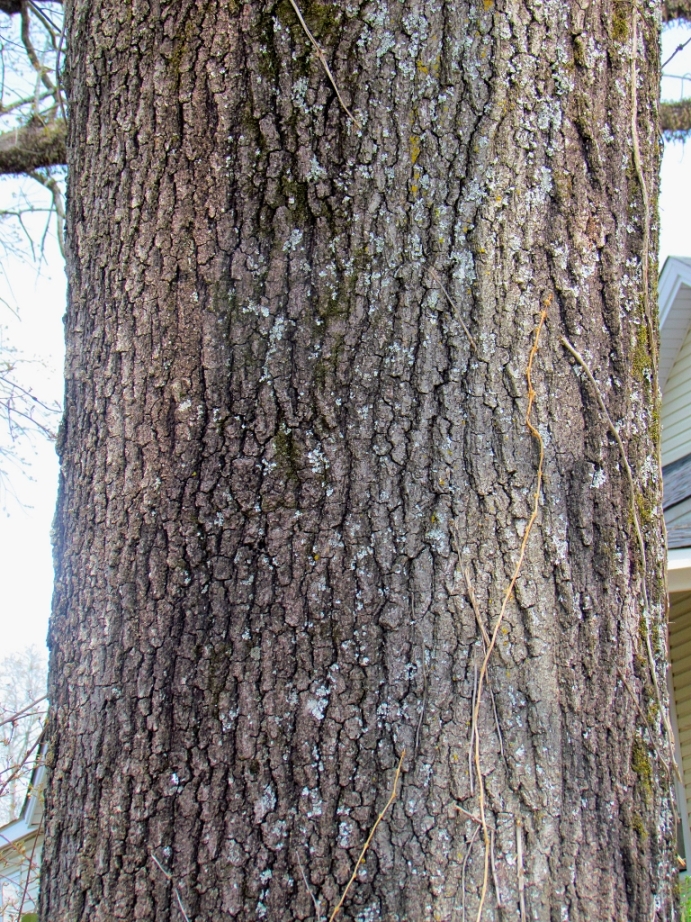
Sargent considered the hybrid’s parents to be Q. phellos and Q. pagodifolia (a synonym of Q. pagoda), as he found it growing together with these two species in “low, inundated woods,” and detected characteristics of these putative parents in the specimens he described (Sargent 1913). However, the taxon Q. pagoda has had an unstable history, and was at times considered to be a variety of Q. falcata. This has led to some confusion with Q. ×subfalcata (Q. phellos × falcata), and one can find many references where Q. ×ludoviciana is defined as being the cross of Q. phellos and Q. falcata (Hoey Smith 2001, Palmer 1948). These two hybrids are indeed difficult to differentiate: according to Beaulieu and Lamant (2006), it is the presence of falcate lobes (typical of Q. falcata) that distinguishes Q. ×subfalcata from Q. ×ludoviciana, whereas Tammie Russell has stated that what sets them apart is Q. falcata’s rounded leaf base: it is found in Q. ×subfalcata but not in Q. × ludoviciana, where the leaf base is acute, like in Q. pagoda (Russell 2014).
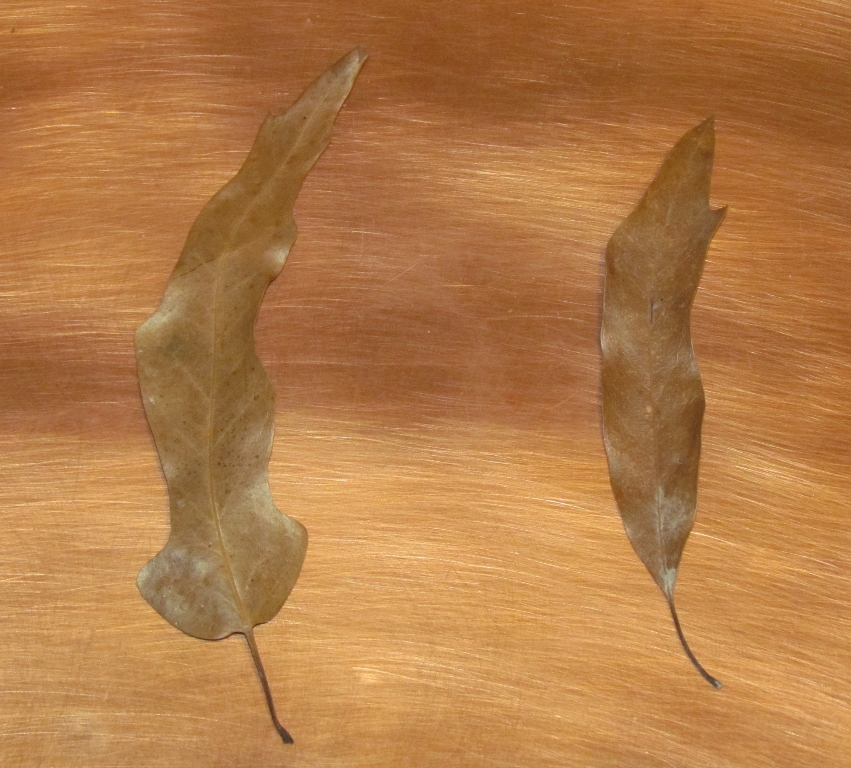
Quercus pagoda does not appear to hybridize readily, despite sharing habitat with many Red Oaks in its wide distribution across central and southeastern USA (Palmer 1948). Trelease (1924) reported that Q. ×ludoviciana is the only hybrid of Q. pagoda had been reported. D.M. Hunt (1990) indicated it also crossed with its close cousin Q. falcata.
According to Hillier (2014), Louisiana oak was introduced to cultivation in 1880. A tree growing in Borde Hill Garden in West Sussex, England was identified in 1932 by Alfred Rehder, Curator of the Herbarium at the Arnold Arboretum, as being Q. ×ludoviciana. Rehder would have been familiar with the newly described hybrid, as C.S. Sargent had been a Director of the Arnold Arboretum and the specimen from St Landry Parish was stored in the Arnold’s Herbarium. The Borde Hill tree came from the famed Rovelli nursery in Pallanza, Italy, but there is no record of the name it was received under (Trees and Shrubs Online). The specimen is listed as the UK champion on the Borde Hill website, 23 m tall in 2009, with a trunk girth of 1.79 m. A specimen of Q. ×ludoviciana at Kew Gardens is from a cutting taken from the Borde Hill tree. It was planted in 1936 and was 13 m tall in 1967 and 19 m tall in 1978. The girth had expanded from 84 cm to 160 cm in the same period (Trees and Shrubs Online), and it currently stretches to almost 4 m (MonumentalTrees.com)
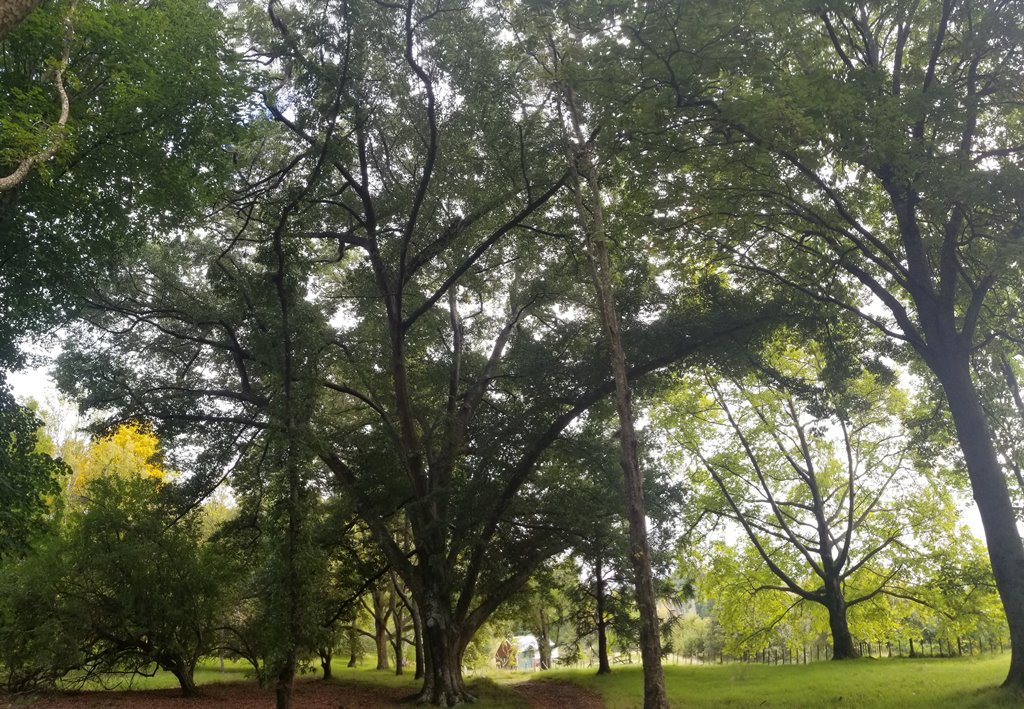
A specimen at Caerhays in Cornwall, England is presumed to be of the same origin and was 19 m tall in 2016, with a 1.54 m girth (Williams 2016). One imagines that Borde Hill may have been the source for the trees propagated by Hillier’s Nurseries, one of which was dispatched to Douglas Cook’s Eastwoodhill in New Zealand, where it flourished and has become one of the star attractions of the collection. Received in 1949, it has displayed impressive growth rate and excellent form, currently standing 29 m tall with a canopy spread of over 40 meters, and apparently it occupies a space of over 34,000 cubic meters! Another of Hillier’s specimens is growing in Trompenburg Gardens in Rotterdam, the Netherlands, where Dick van Hoey Smith was surprised that it was not hardier: “Since both parents are quite hardy, it is quite incomprehensible that this offspring has to be protected in childhood” (Hoey Smith 2001). Received in 1968, it was not planted till 1970 and was later transplanted to a less exposed spot in 1973.
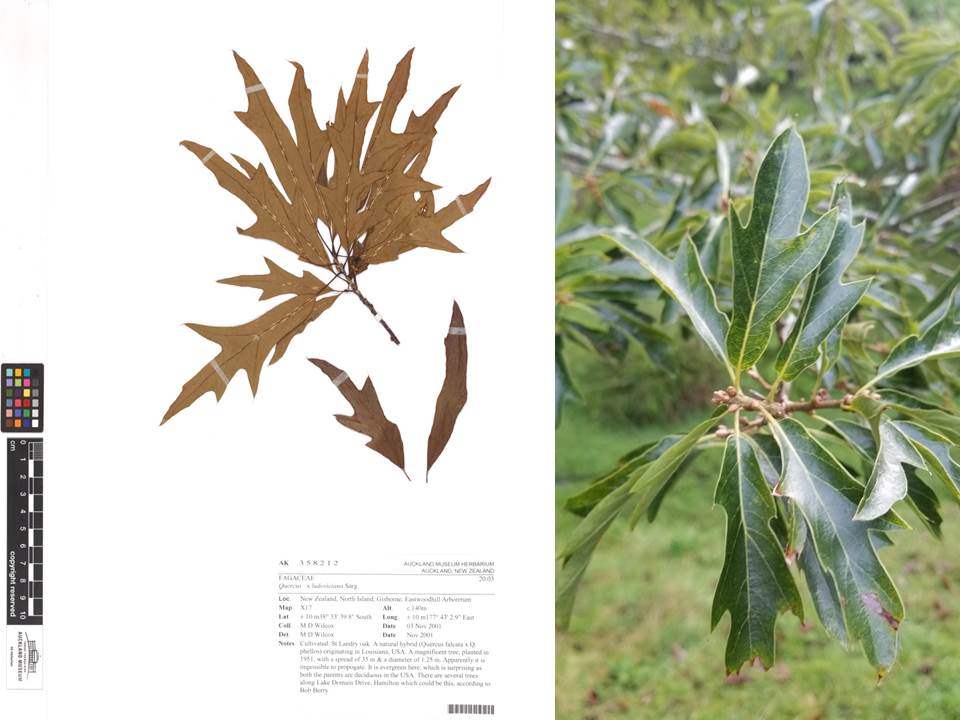
Hillier also notes that the plant commonly grown under the name Q. ×ludoviciana is a form or hybrid of Q. nigra (Hillier 2014). Indeed, an oak found in Trompenburg Gardens, where it had been received as Q. ×ludoviciana from Hillier’s in 1951, was determined to be Q. nigra and selected as a cultivar. It is not clear how this confusion arose, but somehow Hillier’s sent a true Q. ×ludoviciana to Eastwoodhill in 1949, but an untrue one two years later to Trompenburg. The cultivar was named Q. nigra ‘Beethoven’ (Coombes and Jablonski 2006). According to Allen Coombes, the unusual epithet ‘Beethoven’ was chosen as an aide-memoire to indicate its misnamed origin—recall the composer’s first name, Ludwig, German for Ludovicus (Allen Coombes, pers. comm.). This may also help explain why an oak at Hackfalls, labelled Q. ×ludoviciana F2 and grown from seed collected at Eastwoodhill, shows a marked resemblance to Q. nigra.
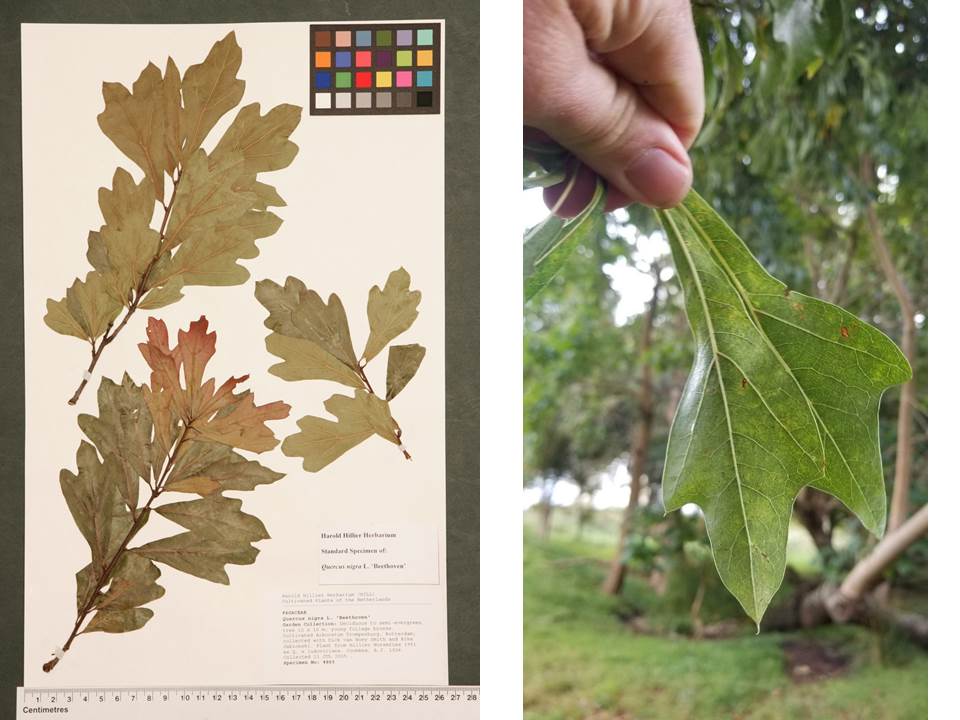
Quercus ×ludoviciana is by all accounts a striking and attractive tree. For Bean, “it is one of the most ornamental of the oaks, with healthy, glossy foliage richly tinted when it unfolds and remaining on the tree without withering until late in the autumn” (Trees and Shrubs Online); for Hillier, “A most attractive, large, semi-evergreen tree of vigorous habit” (Hillier 2014). The hybrid’s remarkable growth rate is to be expected in a descendant of Q. pagoda, which is known to be quick off the mark (Ryan Russell, pers. comm.). When the late Bob Berry was cataloguing the trees at Eastwoodhill in 1976, he noted that the St. Landry oak was a fine specimen and “the most vigorous oak at Eastwoodhill” (Berry 1997)—he also collected acorns from it, and several offspring grow in his Hackfalls Arboretum. Charles Williams describes the specimen at Caerhays as having “especially beautiful bark,” and notes that “it tends to drop all its leaves in spring just as or even before the new growth emerges” (Williams 2014). Most of these plaudits are applied to trees that may originate from the specimen at Borde Hill (some via Hillier's). It would be advisable to expand the gene pool in cultivation, and indeed younger collections such as Chevithorne Barton and Arboretum des Pouyouleix have obtained the hybrid from fresh sources. It will be interesting to see whether they develop the same spectacular characteristics displayed by the older Q. ×ludoviciana in arboreta around the world.
Acknowledgements
With thanks to Allen Coombes and Ryan Russell who provided corrections and additional material.
References
Beaulieu, Antoine le Hardÿ de, and Thierry Lamant. Guide Illustré Des Chênes. Paris: Éditions du 8ème.
Berry, John. 1997. A Man's Tall Dream: the Story of Eastwoodhill. Eastwoodhill Trust Board, Gisborne.
Coombes, A.J. and Jablonski, E. 2006. Some New and Little-Known Oak Cultivars. International Oaks 17: 35-44.
Candolle, A. de. 1864. Cupuliferae, in A. P. de Candolle's Prodromus Systematis Naturalis Regni Vegetabilis 16(2): 1-123.
Hillier, J. 2014.The Hillier Manual of Trees & Shrubs. London: Royal Horticultural Society.2006.
Hoey Smith, J. R. P. van. 2001. Trompenburg Arboretum: Green Oasis in Rotterdam. Stichting Bevordering Van Volkskracht, Rotterdam.
Hunt, D. M. 1990. A Systematic Review of Quercus Series Laurifoliae, Marilandicae and Nigrae. Ph.D. dissertation, University of Georgia, Athens.
Palmer, E.J. 1948. Hybrid Oaks of North America. Journal of the Arnold Arboretum 29 (1): 1-48.
Russell, T. 2014. “Mudding in Mississippi: Oak Open Days, June 27-29.” Oak News & Notes 18 (2): 1-2.
Sargent, C.S., ed. 1913. Trees and shrubs; illustrations of new or little known ligneous plants prepared chiefly from material at the Arnold Arboretum of Harvard university. Boston, New York, Houghton, Mifflin and Co.
Trees and Shrubs Online. “Quercus ×ludoviciana”. http://www.treesandshrubsonline.org/articles/quercus/quercus-x-ludoviciana/ (accessed 2019-12-15).
Trelease, W. 1924. The American Oaks. Memoirs of the National Academy of Science 20:1-255.
Williams, C. 2014. “Evergreen Oaks at Caerhays Estate.” International Oak Society website. https://www.internationaloaksociety.org/content/evergreen-oaks-caerhays-estate (accessed 2019-12-15).
Williams, C. 2016. The Origins of the Oak Collection at Caerhays. The Cornish Garden, Cornwall Garden Society 59 (31-41).

